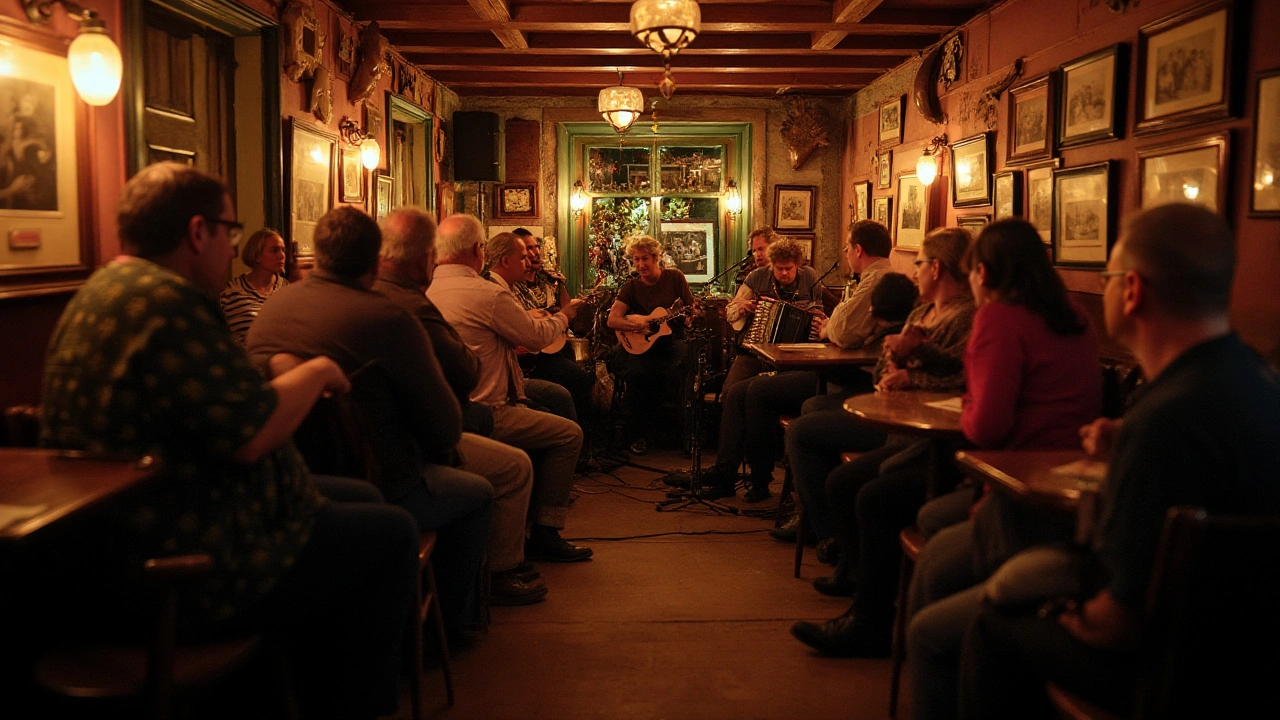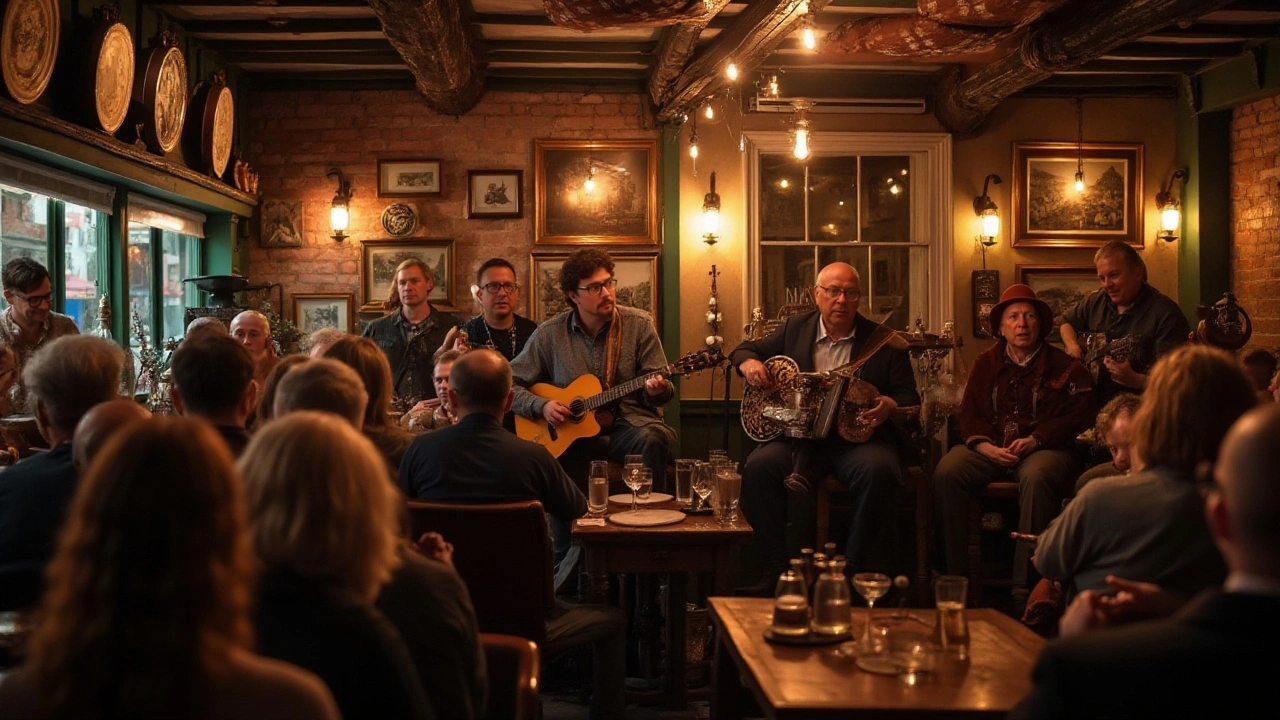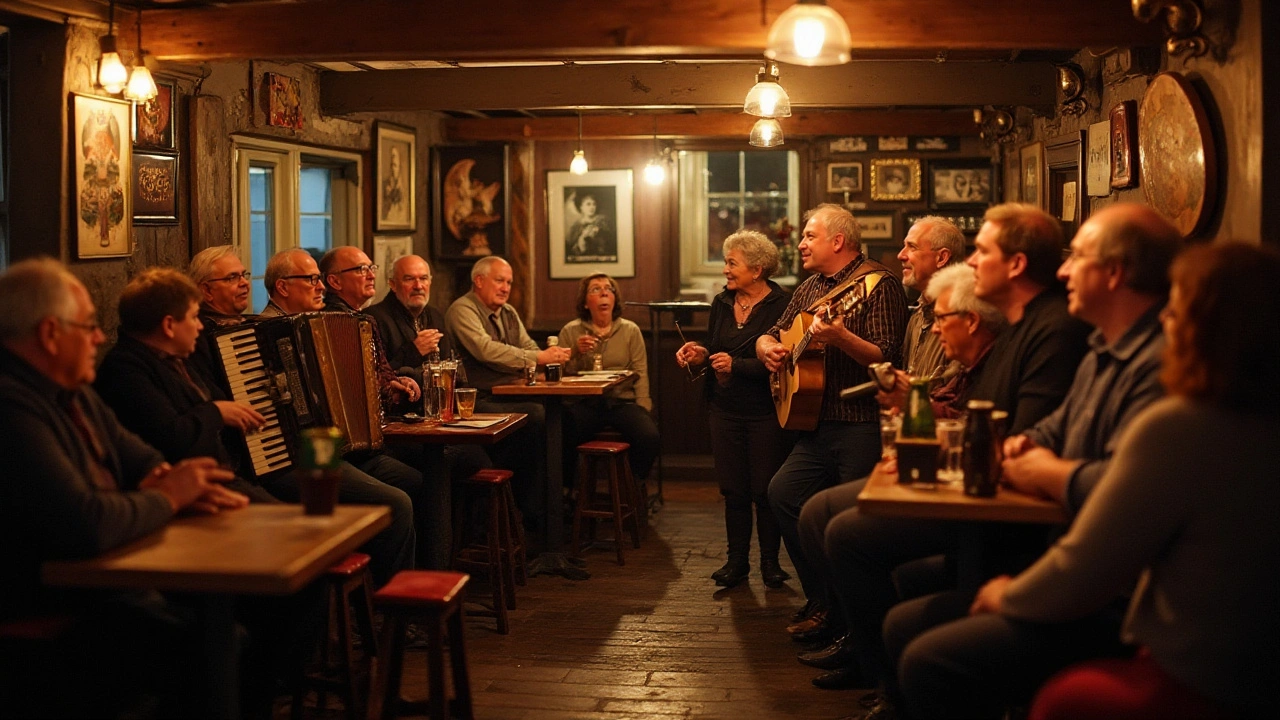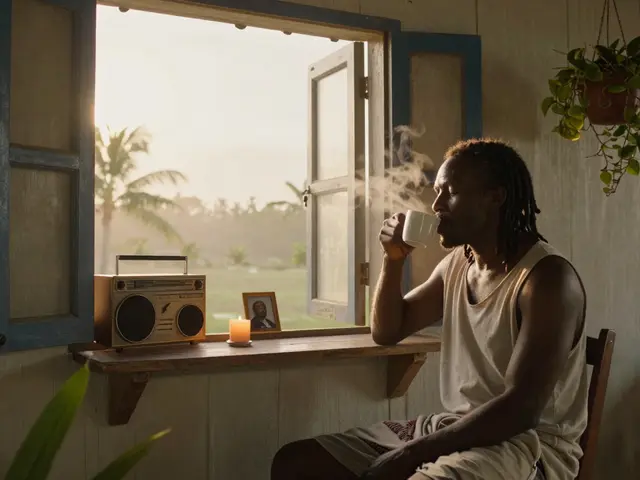Folk music, with its raw simplicity and deep connection to cultural traditions, has always held a special place in the hearts of listeners worldwide. It's a genre that transcends borders, telling stories through melodies passed down from one generation to the next.
Diving into the world of folk music can feel like uncovering a treasure trove of history and culture. Each region boasts its own unique sound, instruments, and stories, making folk music a fascinating subject for both music enthusiasts and casual listeners alike.
- Origins and History
- Cultural Significance
- Diverse Styles
- Notable Artists and Contributions
- Tips for Exploring Folk Music
Origins and History
Folk music traces its roots back to the earliest civilizations, where people used song to recount stories, traditions, and passing events. These tunes often came from rural communities and were passed down orally over generations. This oral tradition is a crucial aspect that differentiates folk music from other genres. In many cases, these songs were never written down but instead learned by memory and shared across communities.
One of the earliest forms of recorded folk music can be found in ancient Greece, where bards like Homer would recite epic poems set to music. These epic tales, such as the famous 'Iliad' and 'Odyssey,' were more than entertainment; they were a way to preserve history and teach moral lessons. Fast forward to medieval Europe, folk music continued to play an essential role, especially among the common people. The music from this era often reflected the social and economic conditions, serving as an audible history book.
In the British Isles, folk music evolved into a rich tapestry of ballads and dance tunes. Collectors like Cecil Sharp in the early 20th century began to transcribe these songs, preserving them for future generations. As the British settlers migrated to the New World, they brought their folk traditions with them. In America, these tunes adapted and evolved, blending with the music of other immigrant communities and indigenous peoples, eventually leading to genres like country and bluegrass.
"Folk music is the gateway to understanding the culture and history of a people. Through its melodies and lyrics, we learn about the triumphs and struggles, the everyday and the extraordinary." - Alan Lomax, renowned musicologist
In many parts of the world, traditional music continues to play a vital role in daily life. In countries like India, Africa, and Latin America, folk music is integral to festivals, rituals, and communal gatherings. It's fascinating to note how these songs can vary widely even within a single country, reflecting the myriad local cultures and traditions.
The preservation and study of folk music have given us enormous insight into societal evolution. For instance, work songs and spirituals from African American communities in the United States not only provide a window into the hardships of slavery but also the resilience and spirit of those communities. The significance of folk music extends beyond mere nostalgia; it is an ever-evolving reflection of human society, offering lessons and insights that are still relevant today.
Cultural Significance
Folk music isn't just a collection of songs; it's a tapestry of cultural heritage and societal history. In many communities, these songs serve as oral histories, preserving stories, traditions, and values that have shaped the lives of the people who sing them. For example, the traditional ballads of Scotland and Ireland often recount local legends and historical events, giving us a glimpse into the past.
The cultural significance of folk music is profound. It plays a crucial role in rituals, celebrations, and communal activities. In places like Africa, traditional songs are integral to ceremonies ranging from weddings to harvest festivals. These songs are not static; they evolve while maintaining their core essence, reflecting the dynamic nature of culture itself.
In India, folk music varies dramatically from one region to another, each style embodying the unique aspects of the area's history and daily life. For instance, Baul songs from Bengal are not just melodies but a spiritual practice, representing a way of life and philosophical thought. This connection between music and community creates a sense of identity and belonging, making folk music a cornerstone of cultural expression.
Historically, folk music has also been a medium for social and political commentary. Songs often address the struggles and aspirations of ordinary people. During the American Civil Rights Movement, songs like "We Shall Overcome" were more than just tunes; they were anthems of hope and resistance. Music became a unifying force, bringing people together in their fight for justice and equality.
Singer Pete Seeger once said, "The key to the future of the world is finding the optimistic stories and letting them be known." His words resonate deeply within the realm of folk music, which is filled with stories of resilience and hope.
The influence of folk music extends beyond its immediate cultural context. It has significantly impacted various modern music genres, from rock and pop to hip-hop and electronic music. Artists often draw on folk traditions to bring a sense of authenticity and depth to their work. The adaptability and enduring relevance of folk music speak volumes about its importance in our cultural landscape.
Even today, folk music serves as a bridge between generations. Younger artists are increasingly exploring their musical roots, blending traditional sounds with contemporary styles. This fusion creates a rich, evolving musical dialogue that honors the past while pushing boundaries. By doing so, they ensure that these timeless melodies continue to resonate with future generations.

Diverse Styles
Folk music is a tapestry woven from various threads, each representing a unique culture, region, and tradition. With so many diverse styles, it's a genre that offers something for everyone. Let's dive into some of the most remarkable and distinct styles of folk music from around the globe.
One of the heartlands of folk music is Eastern Europe, where styles like Polish mazurkas and Hungarian csárdás come into play. Eastern European folk is known for its complex rhythms and vibrant, danceable tunes. Instruments like the accordion, fiddle, and dulcimer are staples of this musical tradition. The emotional and storytelling aspect of the music remains a cornerstone of its charm.
Moving to the British Isles, we find an abundance of folk traditions in England, Ireland, Scotland, and Wales. Irish folk music is famous for its lively jigs and reels, and instruments like the tin whistle, fiddle, and uilleann pipes. Scotland offers a contrasting yet equally compelling tradition, with its emphasis on bagpipes and Highland dancing tunes. English and Welsh folk music brings in ballads and sea shanties, tales of love, labor, and seafaring.
"Folk music is rooted in community. It grew from people coming together and sharing their experiences through song." — Pete Seeger
Heading over to North America, the folk styles adapt to new surroundings while keeping their deeply traditional roots. American bluegrass, for example, has its beginnings in the folk music of immigrants from the British Isles but incorporates African American jazz influences. Bluegrass is characterized by its fast tempos, intricate string work, and soulful harmonies. Similarly, the Cajun folk music of Louisiana blends the French-speaking heritage with local rhythms and flavors, creating a vibrant and infectious sound.
In Latin America, the rhythms get even more infectious. From the haunting melodies of Andean folk music, played on pan flutes and charangos, to the lively rancheras of Mexico that tell tales of love and revolution, every piece of music reveals a part of the geography and lifestyle of its people. Brazilian folk music, including the famed samba, merges African beats with Portuguese and indigenous sounds, creating a sound wholly representative of Brazil's rich history.
Asian folk music also deserves a mention, with its delicate nuances and rich traditions. Indian folk, for instance, varies significantly from one region to another. The bhangra of Punjab, often accompanied by energetic dance, contrasts with the spiritual bhajans from the temples of South India. Chinese folk music, steeped in history, uses instruments like the erhu and pipa to weave intricate, expressive soundscapes.
In Africa, the diverse styles are as vast as the continent itself. West African folk music, with its djembe drums and kora strings, tells the history of tribal storytelling. South African folk incorporates elements of praise poetry and dance rhythms. Each style within Africa represents a different aspect of life, culture, and history, making it a treasure trove for folk music enthusiasts.
Understanding and appreciating the diverse styles of folk music means recognizing that it serves as both an art form and a historical record. It transcends entertainment, providing insights into the values, struggles, and triumphs of the different communities it represents. Whether it's the vibrant, foot-tapping rhythms of Eastern Europe or the soulful, heart-wrenching ballads of the British Isles, there is a piece of folk music out there to resonate with everyone.
Notable Artists and Contributions
Folk music's charm lies in its authenticity and the stories it tells, and this is beautifully demonstrated by its notable artists. One can't talk about folk music without mentioning Bob Dylan. Known for his poignant lyrics and social commentary, Dylan redefined folk music in the 1960s. His songs like 'Blowin' in the Wind' and 'The Times They Are a-Changin'' became anthems for the civil rights movement and epitomize the genre's power to inspire change.
Joan Baez is another towering figure in folk music. Her crystal-clear voice and commitment to social justice have made her a beacon in the genre. Baez often used her platform to address issues like civil rights and war, making her not just an artist but an activist. Her rendition of 'We Shall Overcome' became one of the most powerful protest songs of the era, highlighting the genre's deep-rooted connection to social movements.
Looking beyond America, we find artists like Ewan MacColl from the UK who significantly influenced the British folk revival. MacColl was not only a singer but also a playwright and a labor activist. His song 'The First Time Ever I Saw Your Face' has been covered by many artists, demonstrating the timeless appeal of his work. MacColl's commitment to preserving traditional music and his creation of new folk songs has left an indelible mark on the genre.
As Ewan MacColl once said, "The people have the power to sing their own songs and tell their own stories, and in doing so, change the world."
Across the globe, musicians have contributed to the folk music tapestry in unique ways. In Australia, artists like Archie Roach have brought indigenous stories and sounds to the forefront. Roach's music, particularly his song 'Took the Children Away,' sheds light on the painful history of the Stolen Generations and has been instrumental in raising awareness about Aboriginal issues.
Folk music is also rich with contributions from groups and bands who have kept traditional music alive while blending it with contemporary elements. The Irish band The Dubliners and their lively renditions of traditional Irish folk songs have sparked renewed interest in Ireland's musical heritage. Their influence can be seen in the continued popularity of Irish folk music worldwide.
Another modern-day example comes from the folk-rock scene with Mumford & Sons. Their unique fusion of folk with rock elements has introduced a whole new generation to the beauty of folk music. Songs like 'I Will Wait' and 'Little Lion Man' capture the rawness and emotional depth that define the genre, proving that folk music is not confined to the past but continually evolving.
The contributions of these artists and many others highlight the diverse and enduring nature of folk music. Each has added their unique voice to the genre, ensuring that folk music remains a living, breathing art form. From social justice and activism to the preservation of traditional sounds, the impact of folk music's notable artists is far-reaching and deeply felt.

Tips for Exploring Folk Music
Discovering the magic of folk music can be an enriching journey that opens up new cultural landscapes. To make the most of this exploration, it’s important to approach it with curiosity and an open mind. Here are some practical tips to help you dive into this fascinating genre.
Start by tapping into the roots of traditional music from various regions. Every culture has its brand of folk music, from the Appalachian songs of the United States to the haunting melodies of Celtic music. Listening to a variety of styles will give you a broader understanding and appreciation of the genre's diversity.
Attend live performances whenever possible. Folk festivals provide a unique opportunity to see musicians perform traditional and contemporary folk music. Interacting with performers and other enthusiasts at these events can deepen your appreciation. There’s a folk festival in Woodford, Queensland, renowned for its diverse line-up. You can also find smaller, community-driven events almost every week.
Immerse yourself in historical contexts. Learning about the history and origins of different folk songs can provide a deeper understanding of their significance. For instance, many American folk songs have roots in stories of migration and struggle. The British folk scene has been heavily influenced by historical events like the Industrial Revolution.
Joan Baez once said,
“Folk music has always been about common people. It tells the stories of our struggles, our loves, and our hopes.”Reflecting on such quotes can offer insight into the soul of folk music.
Participate actively in local music sessions. Many communities hold informal gatherings where people play and sing folk music together. Don’t worry if you’re not an expert; these sessions are usually welcoming to beginners. Joining a local group can also be a great way to make new friends who share your interests.
Explore the world of recorded folk music. There are countless classic albums from legendary folk artists that serve as a great entry point. Bob Dylan’s early works, Pete Seeger’s recordings, and releases from British artists like Fairport Convention are seminal. Online platforms like Spotify and YouTube also offer curated playlists that are both accessible and varied.
Modern folk music shouldn’t be ignored. Today’s musicians continue to innovate while honoring traditional sounds. Artists like Mumford & Sons, and The Lumineers have brought folk music to mainstream audiences. Following them can help you see how this genre evolves.
Read about folk music. Many renowned authors have penned biographies and historical texts uncovering the rich tapestry of folk. Books like 'Chronicles: Volume One' by Bob Dylan and 'Bound for Glory' by Woody Guthrie provide inside views into the lives of these essential figures.
Folk music is often tied to dance. Experiencing it through traditional dances like contra dance or céilí (Irish dance gatherings) can be a lot of fun. Many cities and towns offer regular events where you can learn and partake in these dances, providing a physical connection to the music.
Last but not least, create your own folk music. Whether it's writing your own songs or learning to play traditional instruments like the banjo or the fiddle, actively making music can be one of the most rewarding ways to engage with this genre. Having a hands-on experience will greatly deepen your appreciation and understanding.






